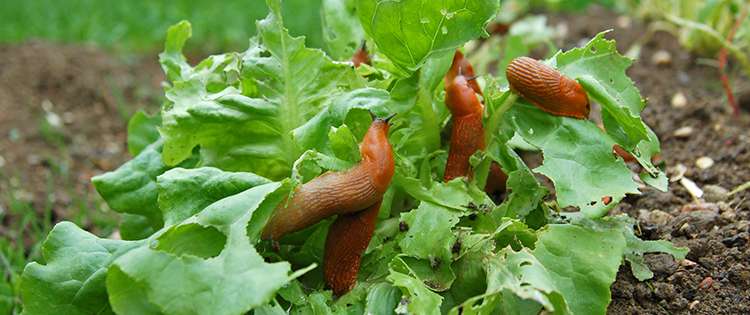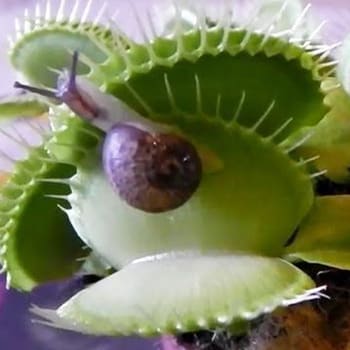Slugs and snails are some of the most common, peskiest, and yuckiest garden pests around. They can be found almost anywhere in the world, most especially in temperate and humid climates.
“Slug attacks” can be so frustrating to deal with and for obvious reasons—they are disgusting to look at and touch and they reproduce rather quickly. They have a distinct appetite for succulent leaves and fresh flowers. They also eat almost everything from leaves, vegetables, seedlings, fruit, and even green bark.
Often, most people resort to using chemical-laden snail-killing products they find online or on the shelves of their local stores. Such solutions cost more and might even cause harm to desirable insects and animals.
In this article, I will show you how to solve your snail and slug problem by using natural, non-toxic, and mostly non-lethal remedies.
How To Tell If You’re Under Snail Attack
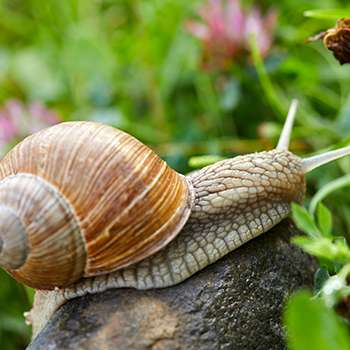
One thing that makes warding snails off your garden is that people often misdiagnose their problem. As slugs and snails primarily feed at night when they are often unseen, gardeners often assume that it was made by a worm or a caterpillar and waste some time looking for the bug. In the end, they will then resort to insecticide which is useless against mollusks.
So, the first thing you need to do is to know the culprit behind it. Here are some tips on how to know if it’s slugs and snails that you’re dealing with.
- Slugs are the most likely cause if you come out to the garden in the morning and all that remains of your seedlings are leaf mid-ribs and stumps.
- Perfect, round holes in tomatoes, strawberries, and other delicate fruits may mean that you need to learn how to get rid of slugs in your garden.
- Slugs leave ragged holes on the borders and centers of leaves. In comparison, caterpillars leave round edges when they feed on leaves.
- Slime trails on plants, walls, rocks, or mulch are another evidence of slug infestation.
Manually Remove Them By Hand
One of the most obvious remedies for protecting your plants against slugs and snails is to remove them using your hand. However, it will take a while and its effect may only last temporarily. What’s more of you? You also have to touch, which can be gross and disgusting!
But if you do choose to deal with them this way, you have to pick them off of your plants and move them away from your plants by at least 20 meters.
Raise Chickens and Ducks
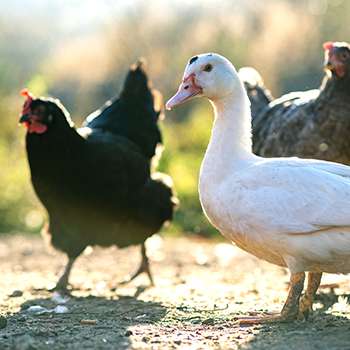
As you might have known already, chickens are a wonderful addition to your garden for a variety of reasons. One of them might just help you with your land mollusk problem. Chickens are known to help keep numerous undesirable insects and many other pests. These include feeding on snails and slugs, including their eggs.
Avoid Watering The Garden Late In The Day
Slugs and snails move by gliding along on their muscular foot, which is covered in epithelial cilia and lubricated with mucus. Having said that, snails still find it difficult to get around on dry soil compared to moist soil. Since slugs and snails often hold their feasts every night, it is a good idea to water your plants early in the morning. This way, the water has enough time to dry off during the day before the slugs and snails start to make their way to your garden plots.
As slugs and snails love wet or moist foliage, it is also a good idea to switch from overhead irrigation to drip irrigation. As the name implies, overhead irrigation involves pouring water on top of the plants, whereas drip irrigation water the plant beneath the soil which keeps the plant foliage dry.
Plant Sacrificial Plants
Also known as Trap Plants, Sacrificial Plants function just like how they are called—by being sacrificial pawns that will attract the pest elsewhere and end up being the critters’ snack. This method is a viable option if you are trying to protect ornamental plants. In a hidden nook in your garden, plant a few lettuces here and there as snails will leave your beautiful plants alone and instead feast on the more succulent and better-tasting lettuce.
Grow Snail Repellent Plants
Aside from planting sacrificial plants, you can also opt to plant snail repellent plants instead. Slugs and snails hate plants that emit strong odors. You can use this to your advantage by growing herbs like Mint, Rosemary, and Thyme around your garden. Garlic is also a good choice to grow if you want to repel slugs and snails.
If you are not keen on growing additional plants in your garden, you may instead scatter chopped Mint leaves around plants that you want to protect.
Encourage Predators To Frequent Your Garden
If you want to stop slugs and snails naturally, then you might just as well let nature run its course. birds, lizards, toads, frogs, and ground beetles are some of the slug and the snail’s most prevalent predators. They will feast on the slugs while leaving your plants and crops relatively safe. Additionally, snakes are also the snails’ most fearsome predator but I doubt that you’d want to find them crawling about your garden!
Stop With The Loose Mulches
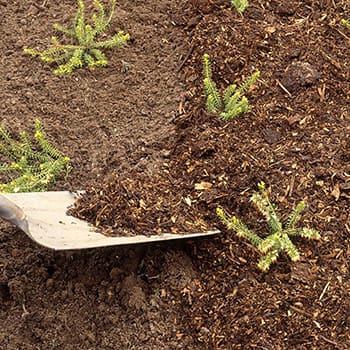
If you’re keen on using straw, shredded wood, and hay mulches, you may want to put an end to it and opt for leaf mold or compost instead. After the slugs finish feasting on your garden goodies at night, they will turn in before the daybreak so they won’t dry up under the heat of the sun. And guess where they go to hide under? That’s right, under the loose mulches.
Set Up Board Traps
Following the same principle above, you can use the slug’s habit against them by setting up board traps. To use this method, lay 2 x 4’s in between crop rows at dusk. The slugs will then take shelter beneath the boards to avoid the sun. After some time, you can flip the boards over, collect the slugs, and they will then be at your mercy. Another variation of this trick is to place inverted watermelon rinds all over your garden and wait for the slugs to gather underneath them.
Conclusion
So, there you have it! Always remember that dealing with slugs and snails naturally is a more sustainable approach in contrast to using chemicals. By doing so, you are also keeping the damage to a minimum as there won’t be any bees, desirable insects, and pollinator birds that will be harmed in the process.
If you know other methods to get rid of snails and slugs the natural way or you need any clarifications on the matter, feel free to leave a comment below.
You may also like:
Foods You Should Never Buy And Always Make At Home
The Only Food That Grows Almost Faster Than You Can Eat It (Video)
15 Gardening Mistakes You’re Making Right Now
10 Common Mistakes You Should Avoid If You Want To Raise Chickens
